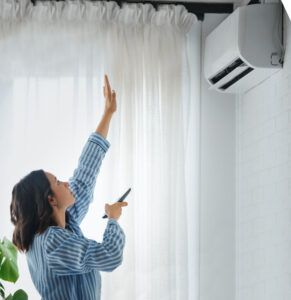
Mold is a common issue for homeowners in Florida, given the state’s humid climate. Mold not only damages your home but can also pose serious health risks. Detecting and removing mold promptly is crucial for maintaining a safe living environment. This blog will guide you through identifying mold growth and the steps to safely remove it from your home.
Recognizing the Signs of Mold
Mold thrives in warm, damp environments, making Florida homes particularly susceptible. Early detection is key to preventing widespread damage. Here are some common signs that mold may be present in your home:
- Musty Odor: A persistent, earthy smell is often the first indicator of mold, especially in areas like basements, bathrooms, and kitchens.
- Visible Spots: Mold can appear as black, green, white, or gray spots on walls, ceilings, or floors. It often starts in damp, hidden areas such as under sinks, behind walls, or around window frames.
- Allergy Symptoms: If you or your family experience unexplained allergy-like symptoms, such as sneezing, coughing, or itchy eyes, mold may be the culprit. Mold spores can trigger respiratory issues, particularly in individuals with asthma or other respiratory conditions.
- Water Damage: Areas with previous water damage or leaks are prime locations for mold growth. Discoloration or warping of walls, ceilings, or floors could indicate hidden mold.
Steps to Remove Mold Safely
Once you’ve identified mold, taking immediate action to remove it is essential. Here’s how you can address mold growth in your home:
- Assess the Extent of the Problem: Determine whether the mold is a small, manageable area or a more extensive issue. For small spots (less than 10 square feet), you can typically handle the removal yourself. However, for larger infestations or if the mold is caused by sewage or contaminated water, it’s best to contact a professional.
- Protect Yourself: When dealing with mold, wear protective gear such as gloves, goggles, and an N95 mask to avoid inhaling mold spores. Ensure the area is well-ventilated by opening windows and using fans.
- Contain the Area: Prevent the spread of mold spores by sealing off the affected area with plastic sheeting. This is especially important if you’re working in a larger space.
- Clean the Mold: Use a mixture of water and detergent or a commercial mold cleaner to scrub away mold from non-porous surfaces. For porous materials like drywall or carpet, it’s often best to remove and replace the affected area, as mold can penetrate deep into these materials.
- Dry the Area: After cleaning, make sure the area is completely dry to prevent mold from returning. Use fans, dehumidifiers, or increase ventilation to remove moisture.
- Dispose of Contaminated Materials: Place any contaminated materials, such as rags, sponges, or removed drywall, in sealed plastic bags and dispose of them properly to prevent further contamination.
Preventing Future Mold Growth
Preventing mold from returning is just as important as removing it. Here are some tips to keep your home mold-free:
- Control Humidity Levels: Keep indoor humidity below 60%, ideally between 30-50%, to prevent mold growth. Use dehumidifiers, especially in damp areas like basements and bathrooms, and ensure your HVAC system is functioning properly to maintain balanced humidity.
- Fix Leaks Promptly: Address any leaks in your roof, walls, or plumbing as soon as they occur. Even small leaks can lead to significant mold growth if left unchecked.
- Improve Ventilation: Ensure that areas prone to moisture, such as bathrooms and kitchens, are well-ventilated. Use exhaust fans, open windows, and consider installing ventilation systems if necessary.
- Regular HVAC Maintenance: Schedule regular maintenance for your HVAC system to ensure it’s effectively managing indoor air quality and humidity. Clean or replace filters regularly to prevent mold from circulating through your home’s air.
Conclusion
Mold is a serious concern for Florida homeowners, but with proper detection, removal, and prevention techniques, you can protect your home and your health. If you suspect mold in your home, take action immediately to address the issue, and consider reaching out to professionals for more extensive problems. By maintaining a dry, well-ventilated environment, you can significantly reduce the risk of mold growth in your home.